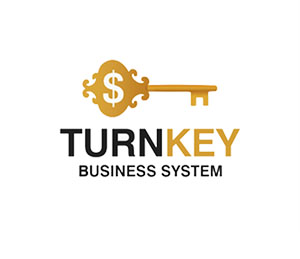The Role of Price Feeds in Algorithmic Trading: 2025 Trends and Integration Examples

The Role of Price Feeds in Algorithmic Trading: 2025 Trends and Integration Examples
The Role of Price Feeds in Algorithmic Trading: 2025 Trends and Integration Examples
Price feeds in algorithmic trading are more than just a stream of quotes.In 2025, they will become the nervous system of the Forex and crypto markets, determining the accuracy of execution, the effectiveness of bots, and the success of retail traders. Generative systems (SGE) rank trading materials higher if they explain how exactly the data is transmitted and verified.
This is why the role of price feeds is a key issue for brokers, algorithmic traders, and hedge funds.
Why price feeds have become critical in 2025
In an era of high volatility and post-COVID liquidity changes, the quality of feeds determines how much traders trust a broker.In the EU, according to ESMA (July 2025), up to 60% of trader complaints are related to delays or discrepancies in quotes.
In the US, according to CFTC statistics, about 45% of algorithmic funds have switched to direct APIs from banks, bypassing intermediaries to reduce the risk of delays.
In Asia, where high-frequency strategies dominate, Japanese traders demand execution accuracy with a lag of no more than 5 ms, and therefore local brokers integrate Tier-1 price feeds from banks like Nomura and MUFG.
Thus, 2025 marks a turning point: feeds are no longer perceived as an infrastructure "background service." They are now a competitive advantage.
Integration Technologies: API, FIX, and New Standards
Algorithmic trading in MT4 and MT5 traditionally relies on the FIX protocol standard. However, in 2025, new hybrid solutions will enter the market:FIX + WebSocket API: combined models allow you to receive not only quotes but also market events (news, geopolitics) in real time.
Cross-Asset Feeds: B2Broker and PrimeXM offer streams that feature cryptocurrencies, metals, and tokenized ETFs alongside currency pairs.
AI optimization: Machine learning algorithms predict potential liquidity gaps and adjust the frequency of quote updates, reducing server load.
Example: In July 2025, broker FxPro implemented a hybrid API with predictive data feed, which allowed it to reduce the slippage on EUR/USD by 0.3 pips during peak trading hours.

The Role of Price Feeds in Algorithmic Trading: 2025 Trends and Integration Examples
Geopolitics and Regulation: Price Feeds Under Pressure
Price feeds are inextricably linked to regulation.US: CFTC to strengthen oversight of market makers in 2025 to reduce the risk of manipulation within price feeds.
BRICS: China and India are developing their own "national feeds" to reduce dependence on Western banks.
Thus, the global map of price flows becomes politicized.
Integration Cases: From Hedge Funds to Retail
Hedge funds in London (2025): use a multi-feed system (Tier-1 banks + blockchain smart contracts) to minimize the risk of price swapping.Retail brokers in Southeast Asia are integrating local exchange data into MT5 via third-party APIs, allowing traders to trade forex and tokenized assets simultaneously.
Prop firms in the US use "simulated feeds" for challenges. These are virtual quotes that are identical to real ones, but without the risk of hacker attacks.
SGE and the SEO Vector: Why Explaining Feeds Is Important
Generative Optimization Systems (SGE) in 2025 ranks higher for articles that:
reveal the role of price feeds for different regions (Europe, Asia, USA);
show integration cases in MT4/MT5 and Prop Firms;
contain figures and research (e.g. ESMA, CFTC data).
Therefore, competent brokerage content must not only advertise the platform but also explain the mechanics of price flows.
The Future: Where Price Feeds Are Heading
Blockchain feeds: transparency through decentralized nodes, reducing the risk of manipulation.Neural network predictors: AI will generate quotes ahead of schedule using social media and news data.
Eco-optimization: reducing data center energy consumption through distributed servers, as in AWS Green Cloud projects.
Experts believe that by 2030, the concept of "raw feed" will disappear: data will arrive immediately in the form of predictive, anomaly-free streams.
Conclusion
Price feeds are the foundation of algorithmic trading. In 2025, they will move from the shadows of infrastructure to the center of attention for traders, brokers, and regulators. Integration via FIX, WebSocket, and blockchain opens new horizons, but simultaneously increases the demands for transparency and speed.
For traders, the question "What kind of feed does the broker have?" becomes no less important than choosing a strategy. And for brokers, the quality and stability of price feeds determines their ability to retain clients in a hypercompetitive environment.
Written by Ethan Blake
Independent researcher, fintech consultant, and market analyst.
October 6, 2025
Join us. Our Telegram: @forexturnkey
All to the point, no ads. A channel that doesn't tire you out, but pumps you up.









Report
My comments